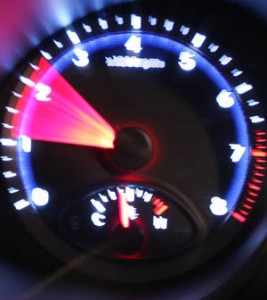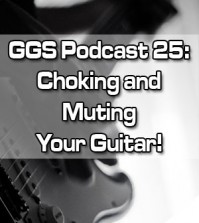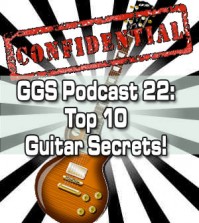How To Play Guitar Fast
If you’ve just started learning the nuances of shredding guitar, you might think that playing fast is some faraway goal. The truth is that it does take years to develop your technique, but it doesn’t mean you can’t increase your speed in the soonest possible time.
The first thing to keep in mind is that it takes consistent habits of practice to improve the synergy between your eyes, hands and ears. This is the key to get them to work together as a team and make your playing less clunky and more seamless as time goes on.
Here are some effective ways to build your muscle memory and get rocking ASAP:
Think About the Long Game
If you’re looking to improve your speed (and your craft in general), you need to map out the exact goals you want to achieve. Know which specific techniques related to playing fast that you want to develop so you can build everything you do around these multiple, long-term targets.
And that’s the key word – “multiple.” Don’t focus on one skill alone if you want to accelerate your guitar playing.
There are many aspects to developing speed, so work on the different elements make up the big picture to become a well-rounded guitarist.
The common problem with doing just one thing over and over is that it doesn’t just limit your learning (e.g. practicing with a metronome 100% of the time) – you’ll also grow frustrated and restless from your slow progress.
Consider the factors that go into speed playing:
– Developing BOTH hands and making them work together
– Tension control
– Building stamina to play at fast speeds
– Picking articulation
– Economy picking
– Posture
All of these add up to playing guitar fast. Thus, you can set aside 30-40 minutes of practice every day on certain licks and techniques to help you build up speed.
To give you an idea, some licks can be done on one string as a muscle memory building exercise which will gradually make you better.
Don’t use up all your time on a specific riff you want to master. Doing it over and over indefinitely is counterproductive.
If you’re working on a solo for instance, try practicing it for 15-20 minutes, then shift to the part after the solo.
Some guitarists like to mess around with tremolo picking to build up a down-up-down-up rhythm. Look for exercises where you can pick a specific note four times in the said rhythm – this is used in many solos, like in “Eruption” by Van Halen.
Remember, a lot of lightning-fast licks are found in alternate picking. The basic approach is having the pick right between your index finger and thumb.
With the pick pointed to your strings, move with the alternating rhythm I mentioned; this means you’ll start with a downstroke and then an upstroke.
To round things out, do sweep picking exercises as well. You’ll find that this technique can get you through tricky arpeggios (most often with the first three strings). Also, this is helpful in putting together your hammer-ons and pull-offs while keeping up with a song flawlessly.
As I said, you’ll want to improve your dexterity for BOTH hands, and not just one. Playing quickly is heavily related to improving one’s legato playing, but your picking hand also needs equal attention. Besides, pulling off those tricky, crazy fast solos means both your hands need to be on the same page.
A word on pick attack: one of the other things you need to work on is the amount of pressure you apply with your pick. You need a good balance between strength and accuracy so that you’re fast enough without breaking a string or your pick.
As for a metronome, keep in mind that not all of learning is about using it while repetitively doing drill after drill. While it’s important in laying down the basic foundations of guitar playing, you also have to branch out and master solos aside from practicing with a metronome.
Side note: some guitarists also like to use a drum machine to improve their speed even more. You can program specific beats and patterns to help with a certain solos and give you an idea of playing with a live drummer.
And while we’re at it, look into software (like Capo or TuxGuitar) that can help you play a certain section of a song, loop it and slow it down. Once you’ve mastered that bit, you’ll be comfortable enough to play it at full speed.
Click HERE to read the rest of the article…







You must be logged in to post a comment Login